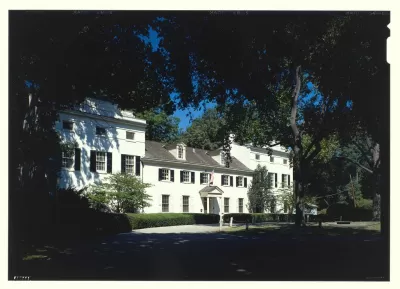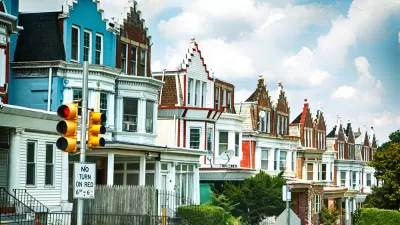Overlay districts provide a tool for guiding the future of development and environmental controls at the neighborhood level.

A little-known zoning tool that has helped neighborhoods restrict new development in the name of historic or architectural preservation is getting new attention as more communities want to understand how zoning changes can help them shape development. According to Ryan Briggs, "overlay had become something of a dirty word in Philadelphia, following a years-long zoning code reform process that sought to simplify the city’s development rules. Now these bespoke zoning districts are back in a big way." Overlays can vary widely in their range and use. "Some covered whole neighborhoods, others single blocks; some curbed development, others encouraged it. Others already on the books can stipulate environmental, advertising, or noise pollution controls."
The Strawberry Mansion Neighborhood Conservation Overlay District, recently approved by Philadelphia's city council, is one of the first districts in a working-class community to establish "preservation standards much like those used in wealthier, often whiter areas" which give residents more control. Tonetta Graham, president of the Strawberry Mansion Community Development Corporation, told WHYY "We’re just trying to keep some sense of the neighborhood that we know."
Overlay districts play a significant role in other cities. Los Angeles, for example, has 35 Historic Preservation Overlay Zones (HPOZs), which aim to "identify and protect the distinctive architectural and cultural resources of Los Angeles’s historic neighborhoods" by adding an additional layer of local planning control.
FULL STORY: The rise of the ‘overlay’: How an obscure zoning tool is shaping Philly’s future (again)

Study: Maui’s Plan to Convert Vacation Rentals to Long-Term Housing Could Cause Nearly $1 Billion Economic Loss
The plan would reduce visitor accommodation by 25,% resulting in 1,900 jobs lost.

North Texas Transit Leaders Tout Benefits of TOD for Growing Region
At a summit focused on transit-oriented development, policymakers discussed how North Texas’ expanded light rail system can serve as a tool for economic growth.

Using Old Oil and Gas Wells for Green Energy Storage
Penn State researchers have found that repurposing abandoned oil and gas wells for geothermal-assisted compressed-air energy storage can boost efficiency, reduce environmental risks, and support clean energy and job transitions.

Private Donations Propel Early Restoration of Palisades Playground
Los Angeles has secured over $1.3 million in private funding to restore the Pacific Palisades playground months ahead of schedule, creating a modern, accessible space that supports community healing after recent wildfires.

From Blight to Benefit: Early Results From California’s Equitable Cleanup Program
The Equitable Community Revitalization Grant (ECRG) program is reshaping brownfield redevelopment by prioritizing projects in low-income and environmental justice communities, emphasizing equity, transparency, and community benefits.

Planting Relief: Tackling Las Vegas Heat One Tree at a Time
Nevada Plants, a Las Vegas-based nonprofit, is combating the city’s extreme urban heat by giving away trees to residents in underserved neighborhoods, promoting shade, sustainability, and community health.
Urban Design for Planners 1: Software Tools
This six-course series explores essential urban design concepts using open source software and equips planners with the tools they need to participate fully in the urban design process.
Planning for Universal Design
Learn the tools for implementing Universal Design in planning regulations.
Ascent Environmental
Borough of Carlisle
Institute for Housing and Urban Development Studies (IHS)
City of Grandview
Harvard GSD Executive Education
Toledo-Lucas County Plan Commissions
Salt Lake City
NYU Wagner Graduate School of Public Service





























